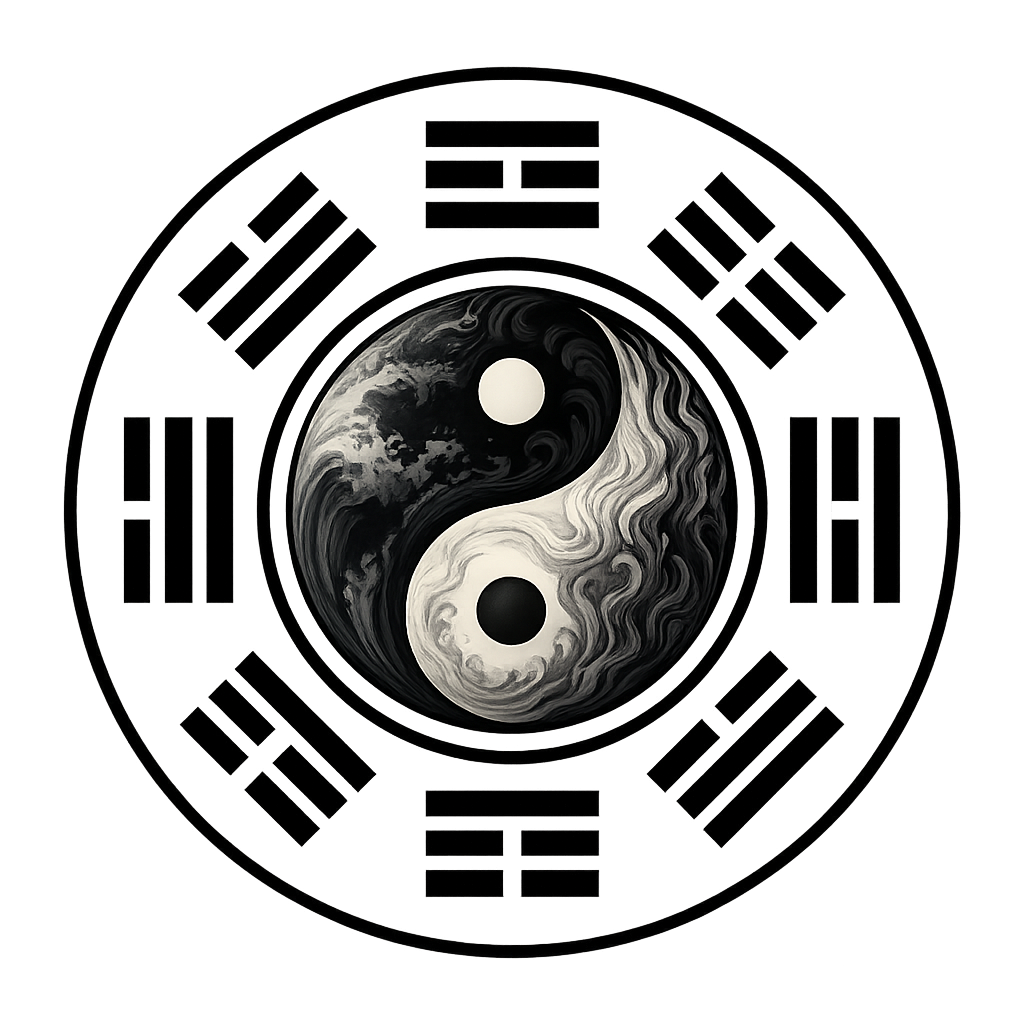Daoismus

The Exciting Ways of Daoism – Cultivating the Art of Living
“Those who know the Dao do not speak of it. Those who speak of it do not know it.”
– Dao De Jing
“Wu wei does not mean doing nothing, but acting in harmony. To practice wu wei is not to interfere where none is needed – and to act when the moment calls. It is doing without force – movement without friction.”
💡 Wu wei – non-forcing
“Ziran is what arises by itself. Not a return to nature, but living from one’s own rhythm. Ziran is not a state, but a becoming without resistance.”
🌿 Ziran – naturalness
“Attributed to the legendary Laozi, the Dao De Jing consists of 81 short chapters. It is not a manual, but a collection of poetic hints toward the unsayable. The more one reads, the less one wishes to explain – and the more one understands.”
📜 Tao Te Ching – The Book of the Way and Its Power
Get the book on Amazon »
What Is Daoism?
Daoism is not a doctrine to be adopted. It is an attitude that unfolds. Not a system that lays down rules, but a movement that dances with life.
At its center stands the Dao – the “Way,” the principle underlying everything, without ever fixing what it is. Whoever tries to grasp it loses it. Whoever listens to it moves with it. The Dao cannot be captured – but one can learn to walk with it.
Daoism does not describe a faith. It invites a way of seeing. Instead of fixed answers, it offers impulses: for calmness, for naturalness, for a life that does not struggle against the world, but blossoms within it.
Sources
The two most important texts are the Dao De Jing, attributed to Laozi, and the Zhuangzi, named after the thinker of the same name. Neither are systematic treatises. They do not teach – they unsettle our habits of thought. They consist of parables, hints, and poetic images.
Laozi speaks in dense, paradoxical formulas. Zhuangzi laughs. His stories of transforming butterflies, dancing wooden men, or a cook gliding through meat without ever hitting resistance show: wisdom is not a possession, but a movement.
Core Concepts and Practice
Speaking about Daoism inevitably brings certain terms – not because they must be defined, but because they must be experienced.
Wu wei (non-forcing): Doing through letting be. The art of not interfering, but working with the situation. Not passivity, but the highest form of skill.
Ziran (naturalness): What happens from itself – uncontrived, unplanned. Like bamboo growing without a scheme.
De (inner power, effectiveness): Not power over others, but the quiet presence of a person in harmony with the Dao.
Yin and Yang: Not opposites, but a play. Light and dark, hard and soft, movement and stillness – interpenetrating, never rigid, always transforming.
Daoism also knows forms of practice. Meditation, qigong, breathing work, inner alchemy – all bring thought back into the body. Philosophy is no head game. It is lived, breathed, moved.
Living Daoism in Everyday Life
Daoism gives no to-do list. It demands no confession. It places an attitude in the room – and asks whether we will step into it.
In everyday life this means: leaving space before reacting. Listening to impulses without following them immediately. Making decisions from the situation, not from principle. Wu wei is not escape – but clarity without coercion.
A Daoist moment may lie in sitting at the window with a cup of tea, needing to achieve nothing. Or in walking – not to arrive, but to find oneself in walking. Or in a conversation that does not push to be enforced, but unfolds by itself
Religion or Art of Living?
Daoism exists in two currents – like two sides of the same stream.
On one side: philosophical Daoism, living in texts, thought figures, and discussions.
On the other: religious Daoism, with temples, rituals, pantheons, and priesthoods. Both forms grew historically – and are often interwoven.
But: there is no church, no membership. No “inside” or “outside.” Daoism lives in local practices, in family lines, in small gestures. It is not believed – it is practiced.
Differences to Other Ways
In contrast to Confucianism, Daoism places no value on order and duty. It mistrusts formulas, rules, hierarchies. Where Confucius trusts institutions, Laozi asks: Who said that was good?
In contrast to Buddhism, it is not about liberation from the world – but about going along with it. Not escape from the cycle, but dancing in the circle. Daoism does not flee suffering – it sidesteps when possible, or transforms it when unavoidable.
No ladder to heaven – but a path through the landscape. No goal – only direction.
Branching and Learning
This text is not an introduction in the classical sense. It does not want to conclude, but to open. For me as well.
What arises here is part of my own learning: tentative, questioning, formulating. I write to expose myself to the Way. Each term, each thought is part of this movement – not final, but becoming.
If from this an impulse arises that helps others find access too: all the better. The coming contributions will deepen individual aspects – like branches of a growing tree. They will carry the thinking further, invite the body, widen the perspective.
A project that learns with every text. Just as I do.
